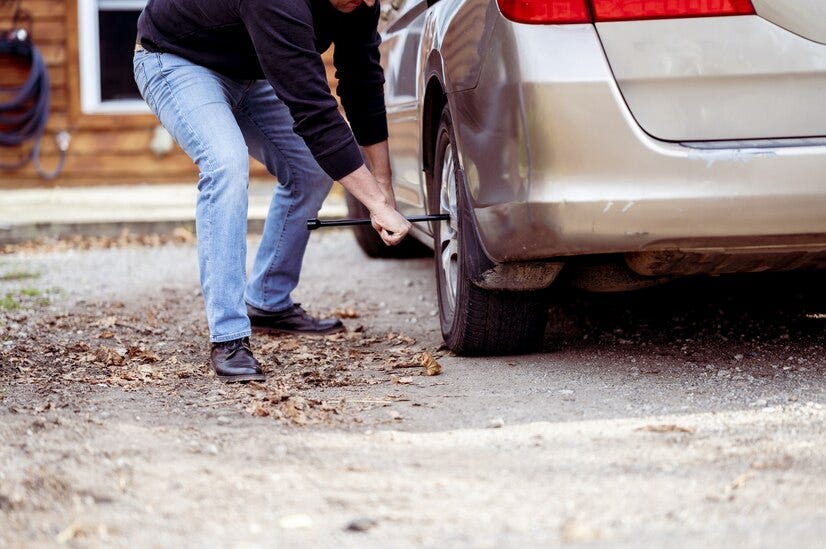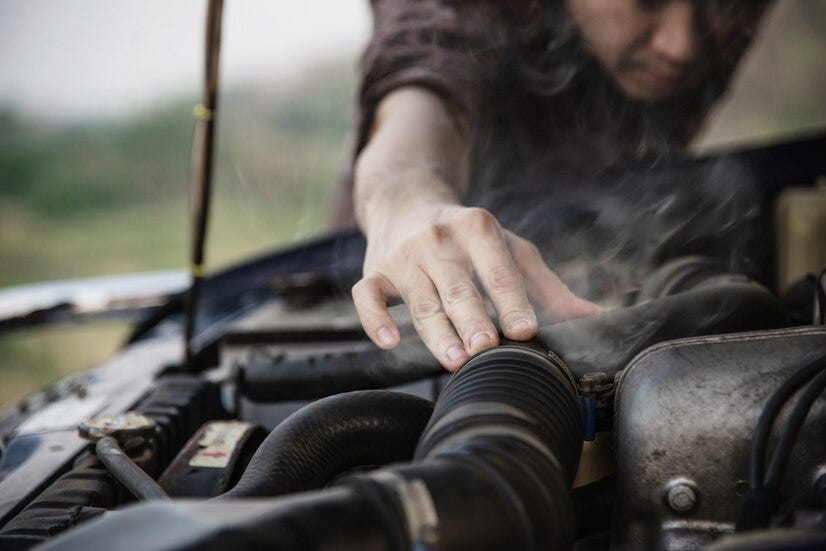
Flat tires are an inconvenience that most drivers will face at some point. Whether it’s during a quick commute or a long road trip, a flat tire can derail your plans and create frustration. However, understanding the common causes of flat tires can help you take preventative measures to avoid them. In this article, we will explore seven frequent reasons for flat tires and what you can do to keep your tires in optimal condition.
1. Punctures by Sharp Objects

One of the most common causes of a flat tire is a puncture by sharp objects, such as nails, screws, or glass. These hazards can easily pierce through your tire’s rubber, leading to a slow leak or immediate deflation.
Prevention: Regularly inspect your tires for embedded objects and be mindful of where you drive, especially through construction sites or debris-strewn roads. If you spot a nail or similar object lodged in the tire, don’t pull it out immediately; this could worsen the leak. Instead, get the tire checked by a professional.
2. Underinflation

Driving with underinflated tires can lead to uneven wear, which weakens the tire’s structure and increases the risk of a blowout. Tires with low air pressure generate excessive heat, particularly during long drives, which can damage the sidewalls and cause a rupture.
Prevention: Use a tire pressure gauge to check the pressure at least once a month or before long trips. Follow your vehicle manufacturer’s recommendations for optimal tire pressure, which can usually be found on a sticker in the driver’s side door frame or in the owner’s manual.
3. Overloading the Vehicle

Carrying more weight than your vehicle’s recommended load capacity can put undue stress on your tires. Overloaded tires are more susceptible to blowouts and excessive wear, as they carry the extra load unevenly.
Prevention: Make sure your vehicle’s load capacity, which is typically listed on the same label as tire pressure recommendations, is not exceeded. When moving heavy items, distribute the weight evenly to reduce strain on individual tires.
4. Hitting Potholes or Curbs

Potholes, curbs, and other road hazards can cause immediate tire damage, especially if hit at high speeds. The impact can lead to a pinch flat, where the tire is compressed between the object and the wheel rim, causing a tear or puncture.
Prevention: Be cautious of road conditions and avoid potholes and curbs whenever possible. If you can’t avoid them, try to slow down to minimize the impact. Regularly inspect your tires and rims for any visible damage after hitting an obstacle.
5. Worn Tire Tread

As tires wear down, they become more susceptible to punctures and flats. Bald tires lack sufficient tread to grip the road properly and are more prone to blowouts due to their weakened structure. In wet conditions, they are also more likely to cause hydroplaning.
Prevention: Check the tread depth of your tires using the penny test: insert a penny into the tire’s tread with Lincoln’s head facing downward. If you can see the top of Lincoln’s head, it’s time to replace your tires. Rotating your tires regularly can also help ensure even wear, extending their lifespan.
6. Valve Stem Leaks

The valve stem, which allows you to inflate the tire, can develop leaks over time due to damage or wear. A faulty valve stem can cause a slow loss of air, leading to a flat tire if not addressed. Dirt, debris, and exposure to the elements can also contribute to valve stem deterioration.
Prevention: During regular tire maintenance, ask your mechanic to inspect the valve stems for wear or damage. If you notice air leaking around the valve, have it replaced as soon as possible. A quick visual inspection when inflating your tires can also help detect early signs of leaks.
7. Extreme Temperatures

Fluctuating temperatures can cause your tire pressure to increase or decrease rapidly. In hot weather, the air inside the tire expands, potentially leading to overinflation and a blowout. Conversely, cold weather can cause underinflation, which increases the risk of a flat tire.
Prevention: Check your tire pressure more frequently during temperature extremes, especially in the summer and winter months. Tire pressure tends to drop about 1–2 PSI for every 10°F decrease in temperature, so it’s essential to adjust accordingly.
How Service My Car Assist You?
Looking for top-notch gmc sierra service? At Service My Car, we offer comprehensive maintenance and repair solutions tailored to your GMC Sierra's needs. Our skilled technicians use state-of-the-art equipment to ensure your vehicle runs smoothly and efficiently. From routine oil changes to complex repairs, we’ve got you covered. Trust us to provide exceptional service and get your GMC Sierra back on the road in no time. Discover how Service My Car can enhance your driving experience today!
Conclusion
Flat tires are an unfortunate but inevitable part of driving. However, by understanding the common causes of flat tires, you can take steps to reduce your risk. Regular tire maintenance, proper inflation, and cautious driving are crucial to extending the life of your tires and avoiding the hassle of a flat. Remember, prevention is key — don’t wait until you’re stranded on the side of the road to think about tire care!

